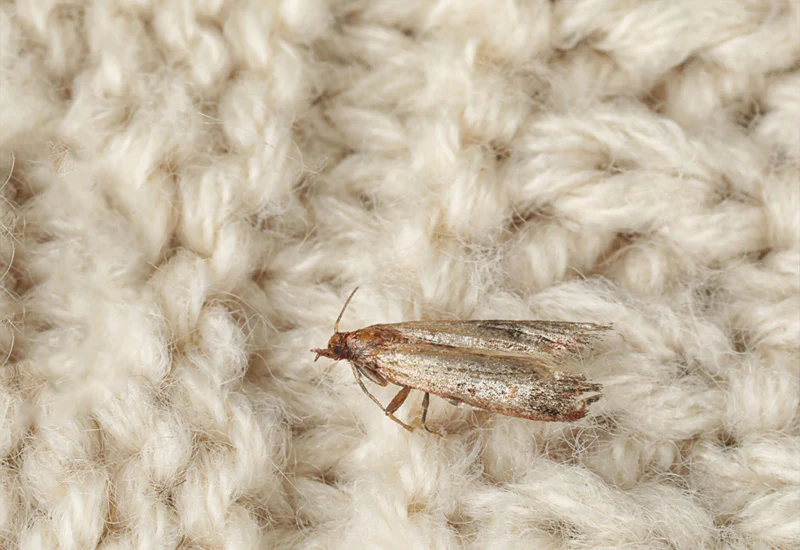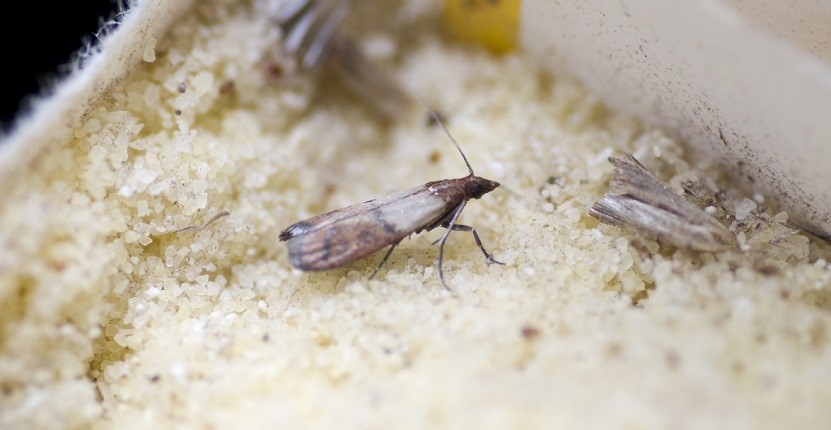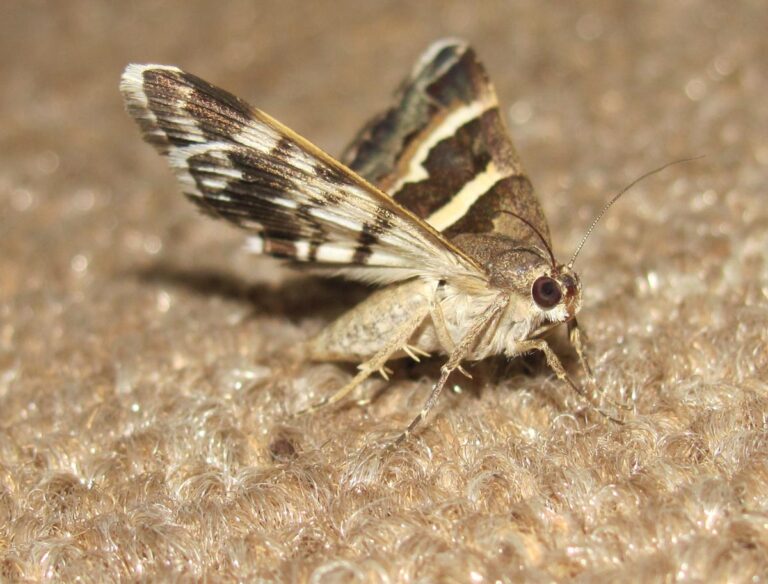Carpet moths, also known as clothes moths, can be a nuisance as they can damage your carpets, rugs, and other textiles. Getting rid of carpet moths involves a combination of preventive measures and targeted treatments. Here is a quick guide on how to eliminate carpet moths from your home:
- Identify the infestation by looking for damage and signs like larvae casings.
- Thoroughly vacuum carpets, rugs, and furniture, focusing on corners and edges.
- Wash textiles in hot water or dry clean them.
- Freeze infested items for at least 48 hours.
- Use moth traps to catch adult moths.
- Keep your home clean and clutter-free.
- Seal entry points to prevent moths from entering.
- Try natural remedies like sachets with lavender or cedar.
- Consider chemical treatments as a last resort, following instructions carefully.
- Maintain regular cleaning and monitoring to prevent future infestations.
How to identify carpet moth infestation?

Discovering a carpet moth infestation early is key to preventing extensive damage. Learn to identify the telltale signs that these tiny but destructive pests have taken residence in your carpets.
Signs and Symptoms of Infestation
Irregular Holes: Look for small, irregularly-shaped holes in carpets, rugs, or textiles. These are a common sign of carpet moth damage, as the larvae feed on natural fibers.
Larvae Casings: Carpet moth larvae leave behind silken, tubular casings known as “larval cases.” These can be found in the affected areas, often stuck to the fibers.
Webbing: In severe infestations, you may notice webbing on the surface of the carpet or between fibers. This is a protective shelter created by the larvae.
Adult Moths: In addition, keep an eye out for small, tan or beige adult moths (usually around 1/2 inch long) with narrow wings. They are often seen flying near carpets or resting on walls and ceilings.
Damage Patterns: Carpet moths tend to prefer dark, undisturbed areas, so check under furniture, along baseboards, and in corners for concentrated damage.
Inspection Tips
Use a Flashlight: Shine a bright flashlight along the surface of your carpets and textiles. This will help you spot larvae casings and webbing, which may be less visible in dim lighting.
Check Hidden Areas: Moths thrive in secluded spots. Lift up furniture, rugs, and carpets to inspect the areas underneath. Also, look inside closets, drawers, and storage containers where textiles are stored.
Carpet Edges: Examine the edges of your carpets and rugs, as moths often start their damage from the sides.
Look for Eggs: Although tiny, carpet moth eggs are oval-shaped and often laid in the folds of fabrics. However, if you see clusters of tiny white or cream-colored eggs, it’s a clear sign of an infestation.
Moth Traps: Placing moth traps in areas where you suspect infestation can help confirm the presence of adult moths. The traps use pheromones to attract and catch them.
Consult an Expert: If you’re unsure about the extent of the infestation or need assistance identifying the problem, consider reaching out to a pest control professional. They can conduct a thorough inspection and provide expert guidance.
How to clean and remove carpet moths effectively?
When carpet moths invade, it’s essential to take swift and thorough action. Let’s explore the most effective methods for cleaning and eradicating these pesky intruders from your carpets.
Invest in a high-efficiency particulate air (HEPA) vacuum cleaner, as it can effectively capture tiny moth eggs and larvae, preventing them from escaping back into your home.
In addition, vacuum not only the carpets and rugs but also any upholstered furniture, curtains, and other textiles in the vicinity of the infestation. Pay special attention to areas with visible damage, webbing, or larvae casings.
Moths tend to lay their eggs and begin damage along the edges and corners of carpets. Use nozzle attachments and crevice tools to thoroughly clean these areas.
After vacuuming, immediately empty the contents of the vacuum cleaner outside your home to prevent any surviving moths or larvae from reinfesting your indoor environment.
Washing and Freezing Infested Textiles:
For textiles that are machine washable, use the hottest water temperature recommended for the fabric. A temperature above 120°F (49°C) is effective at killing moths, larvae, and eggs.
Delicate fabrics that cannot be washed should be taken to a professional dry cleaner. Be sure to inform them about the moth infestation so they can take appropriate measures.
Items that cannot be washed or dry cleaned, such as woolens and furs, can be sealed in a plastic bag and placed in the freezer for at least 48 hours. This will kill any remaining moths, larvae, or eggs. Ensure the items are completely dry before freezing to prevent mold.
On a sunny day, hanging infested textiles outside in direct sunlight can help kill moth larvae and freshen up the fabric.
Proper Disposal of Vacuum Contents:
When emptying the vacuum cleaner, use a sealed plastic bag to contain the contents. Double-bagging is a good practice to ensure moths and larvae don’t escape.
Take the sealed bag outside your home for disposal. Do not simply empty it into your indoor trash bin.
After dealing with a carpet moth infestation, clean and disinfect your vacuum cleaner to prevent any remaining eggs or larvae from hatching inside the machine. Replace or wash filters and clean the vacuum’s interior.
What are effective preventive measures against carpet moths?

There are two main types of moth traps: pheromone traps and sticky traps.
Pheromone Traps: These traps contain synthetic moth pheromones that attract male moths, disrupting their mating and reproduction cycles. Place them in areas where you’ve seen moth activity.
Sticky Traps: These traps use a sticky adhesive to capture adult moths. They are useful for monitoring moth populations and can also help reduce their numbers.
Placement: Position moth traps in areas prone to infestation, such as closets, drawers, and near textiles. Follow the manufacturer’s recommendations for placement and replacement intervals.
Furthermore, check the traps regularly for trapped moths. If you notice a significant number of moths, it may indicate an ongoing infestation that requires further attention.
Maintaining a Clean and Clutter-Free Environment
Regular Cleaning: Vacuum and sweep your home frequently, paying attention to corners, edges, and under furniture. Clean up spills promptly, as food particles can attract moths.
Declutter: Reduce clutter in your home, especially in storage areas like closets and basements. Moths thrive in undisturbed, dark spaces where they can lay eggs without disturbance.
Proper Storage: Store textiles, such as clothing and blankets, in airtight containers or vacuum-sealed bags to prevent moths from accessing them.
Rotate Stored Items: Periodically inspect and rotate stored items to disturb any potential hiding spots for moth larvae.
Sealing Entry Points
Inspect for Gaps: Regularly inspect doors, windows, vents, and other entry points for gaps and cracks that moths could use to enter your home.
Seal Cracks: Seal any openings you find using caulk, weatherstripping, or appropriate sealants. Pay particular attention to areas near utility penetrations.
Install Screens: In addition, ensure that screens on windows and vents are intact and free from tears or holes that could allow moths to enter.
Natural Moth-Repellent Remedies
Lavender: Place sachets filled with dried lavender flowers or lavender essential oil-soaked cotton balls in closets and drawers. Lavender’s scent is a natural moth repellent.
Cedarwood: Cedar blocks, chips, or hangers can deter moths due to the aromatic oils in cedarwood. Replace or refresh cedar items as their scent fades.
Eucalyptus: Eucalyptus leaves or essential oil can also be used as a natural moth repellent. Hang eucalyptus branches or use cotton balls soaked in eucalyptus oil in your storage areas.
Rosemary: Dried rosemary sachets or sprigs placed among textiles can help repel moths with their strong fragrance.
Herb Gardens: Consider planting an herb garden with moths-repelling herbs like lavender, rosemary, and mint near entrances and windows.
FAQ’s
What is the best killer for carpet moths?
The best killers for carpet moths are insecticides specifically designed for moth control. Look for products labeled for carpet moths or clothes moths and follow the manufacturer’s instructions for effective application.
Why do I have carpet moths?
Carpet moths are typically attracted to dark, undisturbed areas with natural fibers like wool and silk, where they lay eggs and feed on textiles. Common reasons for infestations include the presence of infested textiles, poor hygiene, and entry points for moths into your home.
Does vinegar kill carpet moth eggs?
Vinegar can help deter moths due to its strong odor, but it may not effectively kill moth eggs. For thorough egg elimination, it’s better to focus on cleaning, vacuuming, and, if necessary, using targeted insecticides.
Do carpet moths go away?
Carpet moths won’t typically go away on their own. You need to take proactive steps to eliminate them, including thorough cleaning, preventive measures, and, if necessary, chemical treatments.
What smell kills moths?
Moths are repelled by strong scents such as lavender, cedarwood, eucalyptus, and rosemary. These natural fragrances can help deter moths from infesting your textiles and spaces.
How long do carpet moths live?
The lifespan of a carpet moth can vary, but typically adult moths live for 2-4 weeks. During this time, they mate and lay eggs, starting the cycle anew.
Where do carpet moths lay eggs?
Carpet moths lay their eggs on natural fibers such as wool and silk. They often prefer hidden, undisturbed areas like the corners of carpets, underneath furniture, and inside closets or drawers.
What is the best natural moth repellent?
Natural moth repellents include lavender, cedarwood, eucalyptus, and rosemary. These can be used in the form of sachets, essential oils, or by planting moth-repellent herbs in your garden or near entrances to your home.
Final Words
In conclusion, addressing a carpet moth infestation requires a multi-faceted approach that encompasses identification, thorough cleaning, preventive measures, and, when necessary, chemical treatments.
Identifying the signs of an infestation, such as irregular holes, larvae casings, and adult moths, is crucial in initiating a prompt response.
Thorough vacuuming, washing, and freezing of infested textiles are essential for eliminating moths and larvae. Proper disposal of vacuum contents ensures that no surviving moths return.
Preventive measures, including the use of moth traps, maintaining cleanliness, sealing entry points, and employing natural repellents, play a vital role in deterring future infestations.

